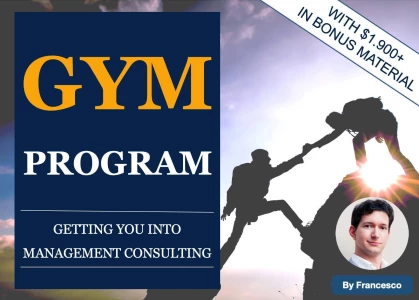So our client is a $100M clothing company that makes clothes for hunters. It is now wants to enter new market and has three options to choose. Which one should it go for: (1) Military Uniforms( size=$300M, Total 40 players with top 4 having 67% of market share). (2) Boots (Market Size= $200M. Total 30 players with top 4 having 65% market share). (3) Bagpacks(Market Size- $100M, 15 players with top 5 having 72% market share).
Which market to enter?


Hi Aditya,
You cannot really answer this question without further information. In particular, you would need to explore at least the following points:
- Goal clarification. As Krishna said, what is the goal of the client? Find synergies? Increase profits? Prevent competition to enter? The specific goal you have may change completely your answer - eg, if your goal is synergies, even if market 1 may potential seem the most attractive from a size point of view, it may be completely unrelated with your objective if you do not produce anything similar.
- Growth rate. How fast are these markets growing? For many objectives found at the point above, this would be a relevant piece of information. If Market 1 is flat and Market 3 is growing 200% per year, the latter will be equivalent to the first in just one year, changing completely the potential answer.
- Barriers to entry. Is it feasible to enter in all the markets? The most attractive ones may be cut out due to that, leaving you with only one potential answer.
- Synergies. In which market there are more positive synergies correlated with our specific goal? This could make even the smallest market the most attractive one, since synergies would expand the benefits of entering in such a market.
For a full structure, you can refer to the previous answer I provided on market entry at the following link:
Hope this helps,
Francesco

Hi,
If it is just the beginning of the case, than you should make a proper market entry structure.
!!! If it is the only piece of information and you have to provide a recommendation based on this information, I would do the following analysis:
Size
- Market 1 - biggest
- Market 3 - smallest
Fragmentation / concentration
- Top players - I believe the concentration of the top players is similar (4 players with 67, 65 and 5 players with 72%). Though I would also check a more granular split (Top3, Top1)
- Total number of players - market 1 - biggest, Market 3 - smallest
Solution
- Option 1 - enter with a new company - Market 1 is better since it has a bigger size and is more fragmented taking into account the total number of players
- Option 2 - acquisition - Depending on your finance. If you have enough money, than market 1 is a good choice (Bigger size, bigger revenues). If you have less finance - market 3 that is cheaper to enter and a bit less fragmented.
- !!! It's important to check the bareers in market 1. Operating in Military usually means having a single government client and limited consumer sales. This may be a huge risk for the business. Boots and bagpacks usually have more options for selling in B2C
Best,
Vlad
I woul first like to ask why the client wants to enter new market.is it to make more profit,or to gai more stability or to satisfy customers?.lets assume that tge company wants to make profit then it should go for the military uniforms because it has the largest market and moderate market share among the top players,i,e,67%, on the other hand it has 40,i.e largest no.of players so competition will be the hardest. i inite others to give some solutions or new ideas









